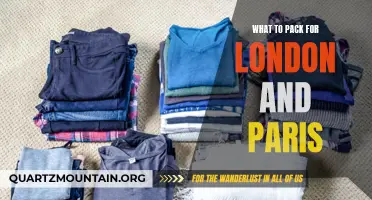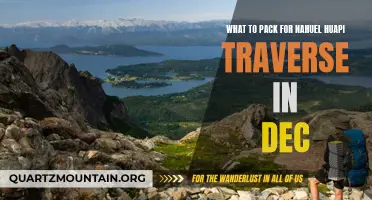
If you're an avid mountain biker who craves the excitement and challenge of traversing rough terrain and tackling intense downhills, then enduro mountain biking is likely your ultimate thrill. However, before you embark on your next adrenaline-fueled adventure, it's essential to pack all the necessary gear to ensure a safe and enjoyable ride. From protective equipment to tools and spare parts, this guide will walk you through the essential items that should be in every enduro mountain biker's backpack. So grab your helmet and get ready to hit the trails!
What You'll Learn
- What are the essential items to pack for an enduro mountain biking trip?
- How should I pack my gear to maximize space and organization?
- Are there any specific tools or spare parts that I should have on hand for trailside repairs?
- What type of clothing and protective gear should I bring for enduro mountain biking?
- Are there any nutrition and hydration considerations that I should keep in mind when packing for an enduro ride?

What are the essential items to pack for an enduro mountain biking trip?
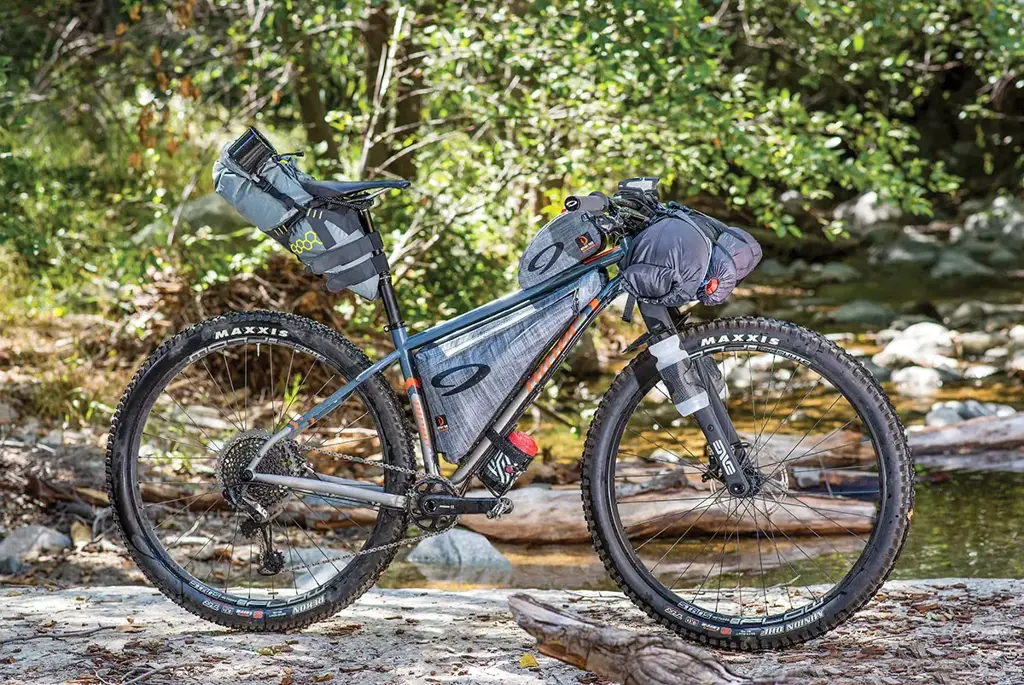
Enduro mountain biking is a thrilling and challenging sport that combines the best aspects of downhill and cross-country riding. If you're planning an enduro mountain biking trip, it's important to pack all the essential items to ensure a successful and enjoyable adventure. In this article, we will discuss the must-have items for an enduro mountain biking trip.
- Helmet: The most important piece of protective equipment you should pack is a good-quality helmet. Look for a helmet that offers full-face protection, as enduro mountain biking often involves technical and high-speed descents.
- Full-fingered Gloves: A pair of full-fingered gloves is essential to protect your hands from blisters, cuts, and scrapes during long rides. Look for gloves with good padding and ventilation to ensure both comfort and protection.
- Knee Pads: Knee pads are crucial for protecting your knees during falls and crashes. Look for knee pads that are lightweight, breathable, and offer a high level of impact protection.
- Elbow Pads: Elbow pads are another essential piece of protective gear, as they protect your elbows from injury during crashes. Look for elbow pads that are comfortable, adjustable, and provide good impact resistance.
- Hydration Pack: Staying hydrated is essential during long rides. A hydration pack allows you to carry water and other essentials, such as snacks and tools, while keeping your hands free. Look for a hydration pack that offers a large reservoir capacity and comfortable straps.
- Multi-Tool: A multi-tool is a must-have for any mountain biker. It allows you to make on-the-go adjustments and repairs to your bike. Look for a multi-tool with a variety of Allen wrenches, screwdrivers, and other essential tools.
- Spare Tube and Tire Repair Kit: Flat tires are common in mountain biking, so it's crucial to carry a spare tube and tire repair kit. Make sure you know how to change a flat tire and repair punctures before you head out on your trip.
- First Aid Kit: Accidents happen, so it's important to carry a basic first aid kit with you. It should contain essentials such as bandages, antiseptic wipes, adhesive tape, and painkillers.
- Snacks and Energy Bars: Enduro mountain biking can be physically demanding, so it's essential to pack plenty of snacks and energy bars to keep your energy levels up. Look for snacks that are high in carbohydrates and protein for sustained energy.
- Extra Clothing Layers: Weather conditions can change quickly when you're out on the trails, so it's important to pack extra clothing layers. A lightweight waterproof jacket, a long-sleeve jersey, and a pair of leg warmers can come in handy in unpredictable weather conditions.
- Protective Eyewear: Sunglasses or goggles are important to protect your eyes from dirt, branches, and other debris on the trails. Look for eyewear with shatterproof lenses that offer both UV protection and good visibility.
- Bike Lights: If you plan on riding during low-light conditions or at night, it's crucial to have a set of reliable bike lights. Look for lights that offer a good combination of brightness, battery life, and durability.
While this list covers the essential items for an enduro mountain biking trip, it's important to note that personal preferences and riding style may require additional items. It's always a good idea to check the weather forecast and trail conditions before you head out and adjust your packing list accordingly. Remember, safety should always be your top priority when embarking on an enduro mountain biking adventure.
Essential Items to Pack for a Memorable Week in Edinburgh
You may want to see also

How should I pack my gear to maximize space and organization?
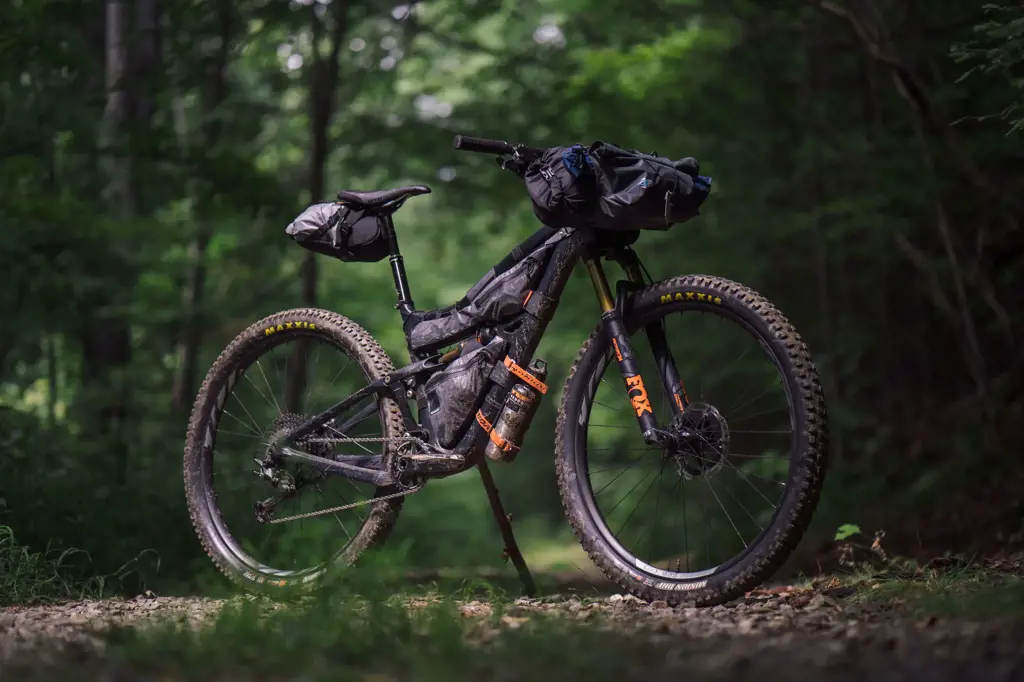
When it comes to traveling, whether it be for work or for leisure, packing efficiently can make a world of difference. Maximizing space and maintaining organization in your luggage can help alleviate stress and make your travel experience much more enjoyable. Here are some tips on how to pack your gear to maximize space and organization.
- Make a list: Before you even begin packing, it is worth taking the time to make a list of everything you need to bring. This will help you identify any unnecessary items and prioritize the essentials. Additionally, having a checklist can be a lifesaver if you need to quickly assess your belongings at any point during your travels.
- Use packing cubes: Packing cubes are a fantastic way to keep your belongings organized and easily accessible. These cubes allow you to group similar items together, such as clothing or toiletries. Not only do they keep your gear neat and tidy, but they also help maximize the space in your luggage by compressing the contents.
- Roll your clothes: Rolling your clothes instead of folding them can save you a significant amount of space. Not only does this method prevent unwanted creases, but it also allows for more efficient packing. Rolling your clothes tightly and placing them in packing cubes or directly into your suitcase can help maximize space and prevent your belongings from shifting during transit.
- Utilize dead space: When packing, it is essential to utilize every inch of available space. For example, stuffing socks or small accessories into shoes can help save space and keep your items organized. Additionally, consider using the space inside larger items, such as bags or coats, to store smaller items that may be easily misplaced.
- Consider the weight distribution: To prevent your luggage from toppling over or causing strain on one side, it is crucial to distribute the weight evenly. Place heavier items at the bottom of your suitcase and lighter items on top. Additionally, try to distribute weight evenly on both sides of the bag to maintain balance.
- Invest in compression bags: Compression bags are an excellent investment for anyone looking to save space and stay organized. These bags allow you to remove excess air, reducing the volume of your clothes or bedding significantly. By compressing your belongings, you can fit more into your luggage while still maintaining a neat and organized presentation.
- Use travel-sized containers: To avoid carrying bulky containers of toiletries, transfer your liquids into travel-sized containers. This will help save space and ensure that you comply with airlines' liquid restrictions. Additionally, consider investing in silicone travel bottles with suction cups, which can easily stick to the walls of your shower or mirror, further maximizing space.
- Pack multi-purpose items: When trying to maximize space, it is essential to pack items that can serve multiple purposes. For example, a sarong can double as a beach towel, scarf, or even a dress. Similarly, a lightweight rain jacket can keep you dry in unexpected weather and act as an extra layer in case of cooler temperatures.
By following these tips, you can make the most of the space in your luggage and stay organized throughout your travels. Remember to plan and prioritize before you pack, and utilize tools such as packing cubes and compression bags to make the most of your space. With a little bit of effort and organization, you can have a stress-free and efficient travel experience.
Essential Items to Pack for a Memorable Week at the Outer Banks
You may want to see also

Are there any specific tools or spare parts that I should have on hand for trailside repairs?
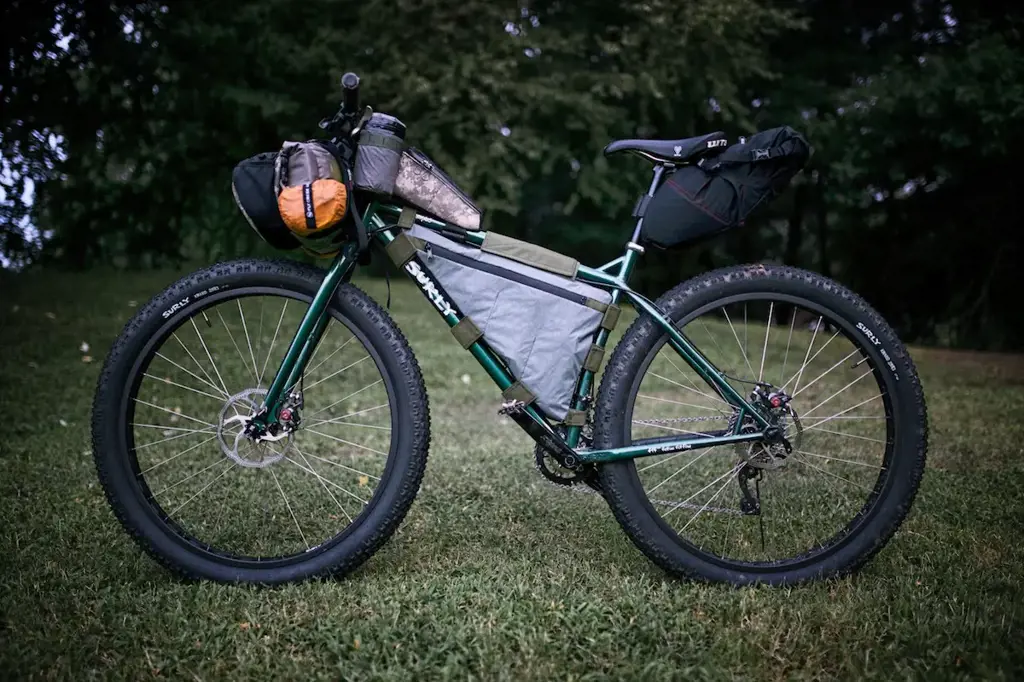
When venturing out on a trail ride, it's important to be prepared for any possible mechanical issues that may arise. Having the right tools and spare parts on hand can help you quickly fix your bike and get back on the trail. Here are some essential tools and spare parts that you should have with you for trailside repairs.
- Multi-tool: A good quality multi-tool is a must-have for any cyclist. It usually includes a variety of hex wrenches, screwdrivers, and Torx bits that can help you tighten loose bolts and adjust various components on your bike. Look for a multi-tool that is compact and lightweight, so it's easy to carry with you on the trail.
- Tire levers: Flat tires are a common occurrence when mountain biking, so having a set of tire levers can be a lifesaver. They can help you remove the tire from the rim, making it easier to fix a puncture or replace a tube. Look for tire levers that are strong and durable to withstand the force required to remove a tight-fitting tire.
- Patch kit or spare tube: In case of a flat tire, it's important to have either a patch kit or a spare tube with you. A patch kit contains adhesive patches that can be used to repair small punctures in the tube. If the damage is too severe for a patch, having a spare tube can save you a lot of time and frustration. Make sure the spare tube is the correct size for your tire.
- Chain tool: A broken chain can quickly end your ride, but with a chain tool, you can fix it on the trail. A chain tool is used to remove the damaged link and rejoin the chain. It's a compact tool that is essential for any cyclist, especially when riding in remote areas. Make sure to practice using the chain tool before you hit the trail, so you know how to use it properly.
- Spare derailleur hanger: The derailleur hanger is a small metal component that attaches the derailleur to the frame. In the event of a crash or impact, the derailleur hanger is prone to bending or breaking. Having a spare derailleur hanger can save you from being stranded in the middle of nowhere. Make sure to get the correct hanger for your specific bike model.
- Quick-link or master link: A quick-link or master link is a removable link that allows you to easily join or separate your bike chain. It's handy for trailside repairs, as it enables you to quickly fix a broken chain without the need for a chain tool. Make sure to carry a spare quick-link that is compatible with your chain.
- Spare bolts and nuts: Bolts and nuts can come loose or get lost during a ride, so carrying a few spare ones can be useful. It's a good idea to have spare bolts for your stem, handlebars, and seatpost, as these components are frequently adjusted and can become loose over time. Make sure to get the correct size and thread pitch for your specific bike.
- Duct tape and zip ties: Duct tape and zip ties are versatile tools that can be used to temporarily fix a wide range of issues. They can secure loose cables, hold a broken part together, or even repair a torn tire sidewall. Carrying a small roll of duct tape and a handful of zip ties can save you in situations where a proper fix is not possible.
Remember, it's always better to be over-prepared than under-prepared when it comes to trailside repairs. These tools and spare parts can help you quickly address common issues and keep your bike functioning smoothly. Practice using them before your ride, and familiarize yourself with the specific components of your bike to ensure you can perform the necessary repairs efficiently.
The Essential Packing Guide for a Weekend in Seville
You may want to see also

What type of clothing and protective gear should I bring for enduro mountain biking?
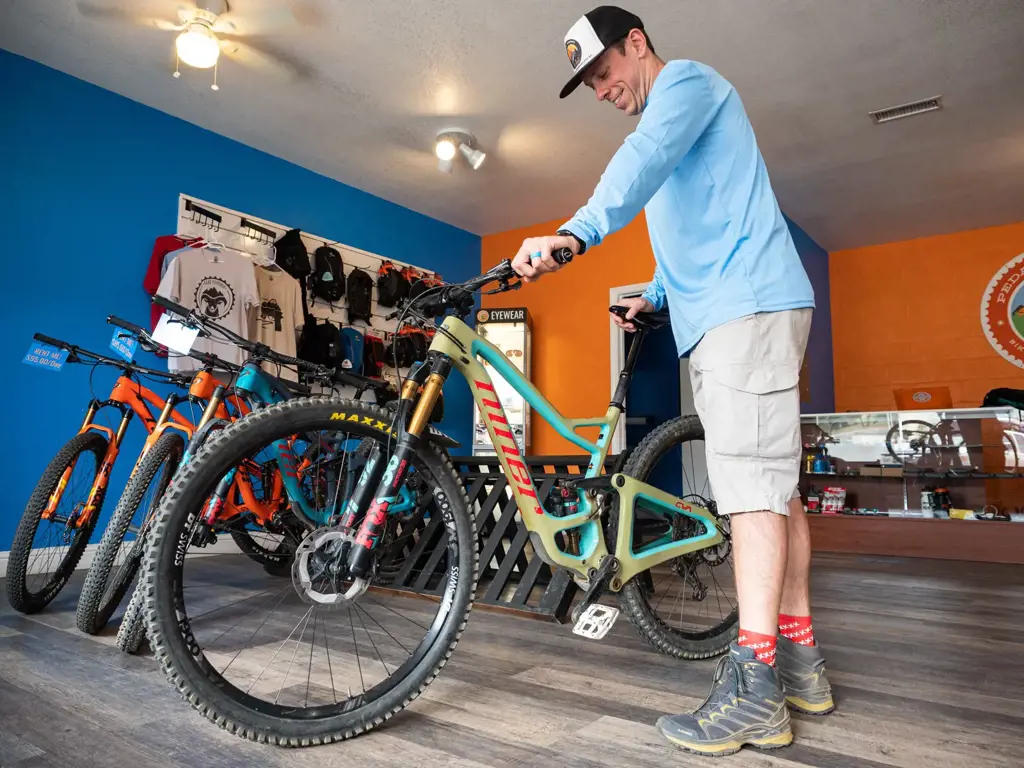
Enduro mountain biking is a thrilling and exhilarating sport that combines the endurance of cross-country biking with the technical skills required for downhill racing. As with any outdoor sport, it is important to come prepared with the right clothing and protective gear to ensure a safe and enjoyable experience.
- Helmet: The most important piece of protective gear for enduro mountain biking is a good quality helmet. Look for a helmet that is specifically designed for mountain biking and has the appropriate safety certification. It should fit snugly on your head and have plenty of ventilation to keep you cool during long rides.
- Body Armor: Enduro mountain biking often involves riding on challenging and technical terrain, making the risk of crashes and falls higher. To protect your upper body, consider investing in a chest protector or a full suit of body armor. These pieces of gear provide added protection to your chest, back, shoulders, and arms, reducing the risk of serious injuries.
- Knee and Elbow Pads: Falls are a common occurrence in enduro mountain biking, especially when navigating through rocky or rooty sections of the trail. Knee and elbow pads are essential for protecting these vulnerable joints during impacts and slides. Look for pads that are lightweight, comfortable, and offer adequate coverage and protection.
- Gloves: Wearing gloves while mountain biking not only enhances your grip on the handlebars but also protects your hands in case of a fall. Opt for gloves that are breathable, offer good padding, and have reinforced areas on the palms and fingers for better durability.
- Jersey and Shorts: When it comes to clothing for enduro mountain biking, comfort and breathability should be the top priorities. Look for jerseys and shorts made from moisture-wicking fabrics that can keep you cool and dry during intense rides. Avoid cotton materials that trap sweat and can cause discomfort. Additionally, consider wearing clothing with a relaxed fit to provide freedom of movement and accommodate the use of body armor.
- Footwear: Proper footwear plays a crucial role in ensuring good pedal grip and stability while mountain biking. Opt for flat pedal shoes with grippy soles that offer optimal traction on the pedals. Some riders also prefer shoes with ankle protection for added stability and support.
- Eyewear: Protecting your eyes from trail debris, wind, and branches is essential for maintaining clear vision and preventing injuries. Invest in a pair of good quality mountain biking sunglasses or goggles that offer both UV protection and impact resistance. Look for designs that provide a wide field of vision to improve your peripheral awareness on the trail.
In conclusion, when preparing for enduro mountain biking, it is important to choose the right clothing and protective gear. A good quality helmet is a must, along with body armor, knee and elbow pads, gloves, and proper footwear. Opt for moisture-wicking and comfortable clothing for maximum comfort. By investing in the right gear, you can enhance your safety, enjoy the sport to its fullest, and have a memorable riding experience.
Essential Items to Pack for a Trip to Cedar Point
You may want to see also

Are there any nutrition and hydration considerations that I should keep in mind when packing for an enduro ride?
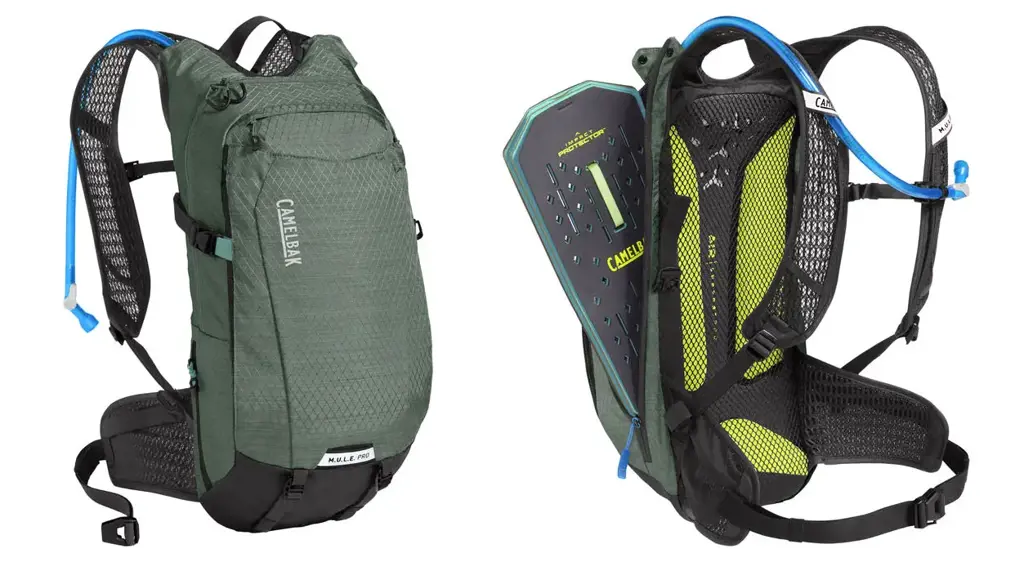
When preparing for an enduro ride, it is crucial to consider nutrition and hydration as they play a significant role in your performance and overall well-being. Enduro rides can be physically demanding, and your body will need the right fuel to keep you going. Here are some important considerations to keep in mind when packing for your ride:
- Stay Hydrated: Hydration is key during any physical activity, and enduro riding is no exception. Dehydration can negatively affect your performance and lead to muscle cramps, fatigue, and dizziness. Pack enough water and remember to drink regularly throughout your ride. It is also a good idea to bring a hydration pack or a water bottle holder on your bike so that you can sip water easily without stopping.
- Electrolyte Balance: When you sweat during the ride, you not only lose water but also essential electrolytes. These electrolytes, such as sodium, potassium, and magnesium, are necessary for proper muscle function. Drinking water alone may not be sufficient to replenish these electrolytes. Consider packing an electrolyte drink or adding electrolyte tablets to your water to maintain a proper balance.
- Fuel with Carbohydrates: Carbohydrates are a primary source of energy for endurance activities. Packing carbohydrate-rich snacks like energy bars, gels, or fruits can provide you with the necessary fuel to keep your energy levels stable during the ride. Aim for easily digestible carbohydrates to avoid gastrointestinal issues.
- Protein for Recovery: After a long and intense ride, your muscles will need protein for repair and recovery. Pack some protein snacks or recovery drinks to consume immediately after your ride. Protein bars, shakes, or even a sandwich with lean protein sources like turkey or chicken can help kick-start the recovery process.
- Balanced Meals: If your enduro ride extends over several hours or even a full day, it is essential to pack balanced meals to fuel your body adequately. Include a mix of carbohydrates, protein, and healthy fats in your meals. For example, a sandwich with wholegrain bread, lean protein, and avocado can provide the necessary nutrients for sustained energy.
- Don't Forget Snacks: In addition to your main meals, pack some snacks to keep you fueled throughout the ride. Nuts, dried fruits, trail mix, or granola bars are all great options. These snacks are lightweight, easily portable, and provide a quick energy boost when needed.
- Test and Train: It is important to test different nutrition and hydration strategies before your enduro ride. Everyone's body is different, and what works for one person may not work for another. Experiment during your training rides to find out what foods and drinks work best for you in terms of performance and gastrointestinal comfort.
Remember that nutrition and hydration are not only important during the ride but also before and after. Eating a balanced meal before your ride and ensuring proper recovery nutrition afterward will contribute to improved performance and muscle repair. Additionally, don't wait until you feel thirsty or hungry to eat or drink; maintain a regular schedule to avoid energy dips and dehydration.
In conclusion, packing for an enduro ride requires careful consideration of your nutrition and hydration needs. Stay hydrated, replenish electrolytes, fuel with carbohydrates, include protein for recovery, pack balanced meals and snacks, and test your nutrition strategies during training rides. Taking these steps will help you stay energized, perform at your best, and enjoy your enduro ride to the fullest.
Essential Packing Guide for Insight Vacations: Ensuring a stress-free travel experience
You may want to see also
Frequently asked questions
When packing for enduro mountain biking, it is important to bring along the necessary gear to ensure a safe and enjoyable ride. Some essential items to include are a helmet, knee and elbow pads, gloves, and a hydration pack. These items will provide the necessary protection and hydration needed for a long day on the trails.
It is recommended to pack at least two spare tubes when going on an enduro mountain biking trip. Enduro rides often involve long and challenging descents, which increases the risk of getting a flat tire. Having multiple spare tubes ensures that you are prepared for any unexpected punctures or tire issues that may arise during your ride.
Yes, it is important to bring along a basic set of tools and equipment for enduro mountain biking. This includes a multi-tool with various sizes of Allen wrenches, a chain tool, tire levers, a pump, and a spare derailleur hanger. These tools will allow you to make basic repairs or adjustments to your bike while out on the trails.
When packing clothing for enduro mountain biking, it is important to consider the weather conditions and temperature of your destination. Generally, it is recommended to pack lightweight, moisture-wicking and breathable clothing, such as a cycling jersey and shorts. Additionally, bringing along a lightweight windbreaker or rain jacket can be beneficial in case of unexpected weather changes.
Yes, it is important to pack some nutrition and snacks for enduro mountain biking, especially for longer rides. Energy bars, gels, and electrolyte packets are great options to provide you with the necessary fuel and hydration during your ride. It is also important to pack enough water or electrolyte drinks to stay hydrated throughout the day.


